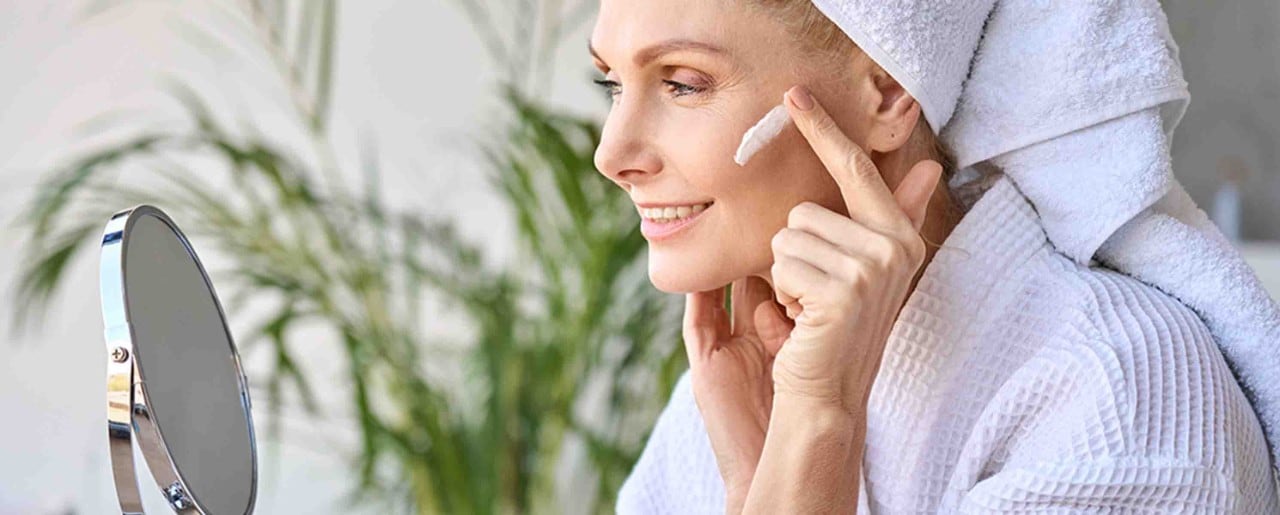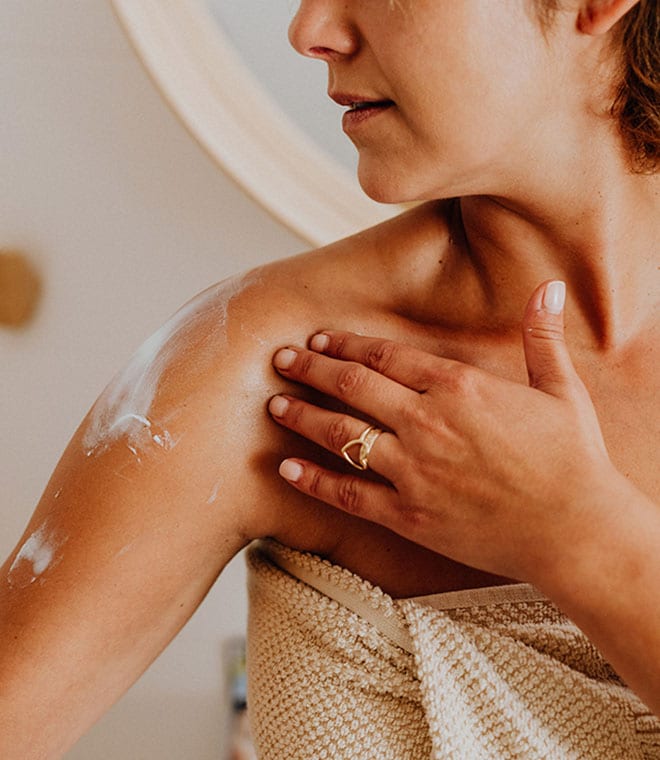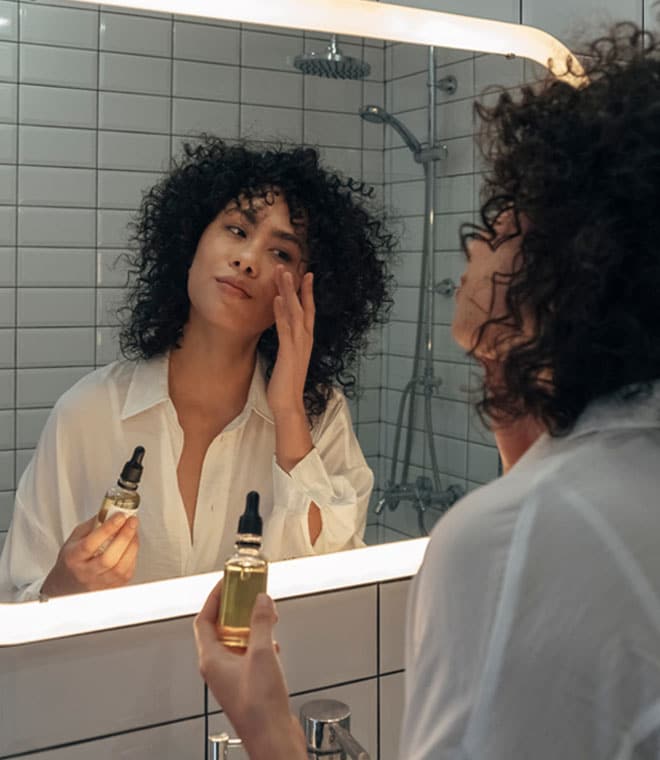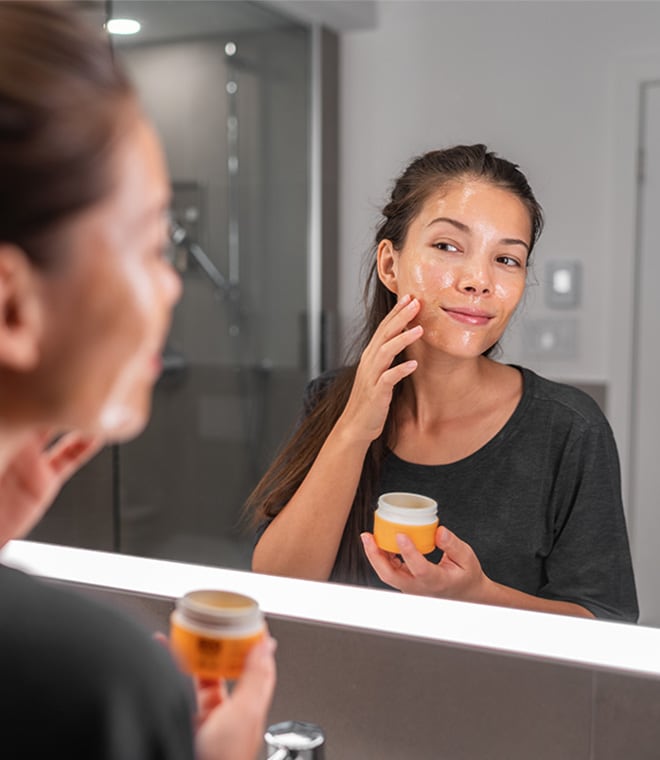Health
Anti-aging skin care routine: A complete guide
By Anna H. Chacon, MD, Fellow of the American Academy of Dermatology Jul 22, 2024 • 8 min
While you can’t stop the aging process, adopting an anti-aging skin care routine can help support a youthful complexion and potentially diminish the appearance of fine lines, wrinkles, age spots and other signs of aging.
Anti-aging skin care basics
Typically, you’ll want to perform your anti-aging skin care routine twice daily: once in the morning and once at night. Some skin care products you’ll use during both your AM and PM sessions, while others may be intended for once-daily use or for application a couple of times per week. The basic components of a skin care routine include the following:
- Cleanser: Before applying an anti-wrinkle cream, serum or lotion, wash your face with a gentle facial cleanser designed for your skin type. Doing so will help to remove impurities and prepare your skin for other products. After you cleanse, gently pat your face dry with a soft towel.
- Treatments: After cleansing, apply treatments geared toward your specific anti-aging skin care goals. There is a wide range of skin cream, lotion and serum products to choose from. Follow the directions for use featured on the packaging for best results.
- Moisturizer: Hydrating your skin is an important part of both your AM and PM skin care routines. Moisturizers replace lost hydration and can help skin look smoother and appear more radiant. Choose a moisturizer intended for your skin type.
- Sunscreen: Sun damage drives the aging process, contributing to the development of fine lines, wrinkles and age spots. Applying a broad-spectrum sunscreen every morning can help shield your skin from the damaging effects of UV. Choose a product with an SPF of 30 or higher. If you wish to simplify your skin care routine, consider using a moisturizer that contains sunscreen in the morning.
- Exfoliator: Exfoliating is the process of removing dead skin from the surface. Most people don’t need to exfoliate every day, but regular exfoliation once or twice per week may help improve skin radiance and diminish signs of aging, such as fine lines and age spots.
There are two main types of exfoliators:
- Mechanical: These exfoliators contain abrasive ingredients that create friction when rubbed against the skin, helping to lift away dead skin. They are often considered most suitable for people with oily skin.
- Chemical: These exfoliators typically use alpha hydroxy acids, such as lactic or glycolic acids, to break the bonds that hold dead skin cells in place. They are often recommended for dry or sensitive skin.
When you use your exfoliator, apply it after cleansing and then follow up with a moisturizer.
How to choose and use anti-aging skin care products
Follow these tips to select the right anti-aging skin care products for your needs and maximize their benefits:
1. Look for ingredients that align with your goal: When selecting treatments, keep your No. 1 anti-aging skin care goal in mind, looking for products that contain ingredients geared toward your specific needs. Some common ingredients found in anti-aging serums, creams and lotions include:
- Alpha hydroxy acids: Also called AHAs, alpha hydroxy acids exfoliate the skin to help restore radiance and make lines and age spots less prominent.
- Hyaluronic acid: A substance naturally present in skin tissue, hyaluronic acid attracts moisture, producing a plumping effect while boosting hydration levels to promote a more radiant, youthful-looking complexion.
- Niacinamide: A form of vitamin B3, niacinamide interferes with the production of skin pigment to help address age spots.
- Retinol: Derived from vitamin A, retinol assists with cellular turnover to help promote a more even skin tone and diminish fine lines.
- Vitamin C: Research shows that vitamin C may help make age spots, lines and wrinkles less prominent. The vitamin also acts as an antioxidant, helping to protect the skin from free radicals that contribute to aging.
2. Start slowly: If you’re new to following an anti-aging skin care routine, start gradually with just a cleanser, a moisturizer and a sunscreen. Once you get into the habit of using your products daily, add one treatment product tailored to your anti-aging goals. From there, you can expand your regimen with additional products over time.
3. Read labels carefully: Before purchasing any new skin care product, read the label carefully. Look for products that are hypoallergenic, meaning they’re less likely to irritate your skin, and noncomedogenic, which indicates they won’t clog your pores. Follow the directions for use that appear on the product you choose to ensure the best results.
4. Use a gentle touch: When washing your face and applying skin care products, be as gentle as possible. Avoid rubbing too vigorously or using rough towels for drying. To protect the delicate skin around your eyes, apply products with your ring finger to keep your touch light.
5. Test before using: Before you apply any new product, perform a spot test by using a small amount on the inside of your forearm. Continue twice daily for four to five days. If you don’t notice any side effects, you can use the product on your face.
6. Watch out for side effects: When using a new product, look for signs of irritation, such as redness, itching or stinging. Discontinue use if you experience any of these symptoms.
7. Practice patience: No skin care product can deliver noticeable results after just one use. Consistent use over a period of six weeks is often necessary to begin seeing results. Unless you experience irritation, continue using a product for at least a couple of months to get a clear idea of how well it works for you.
When to consider clinical interventions
If your daily anti-aging skin care regimen doesn’t yield satisfactory results within a few months, talk to your healthcare provider. They can help you explore prescription treatments and other clinical interventions that can reduce wrinkles, age spots and other signs of aging.
Published July 2024.
Sources:
- https://www.health.harvard.edu/blog/drugstore-skincare-science-backed-anti-aging-ingredients-that-dont-break-the-bank-2020111121309
- https://www.health.harvard.edu/blog/why-is-topical-vitamin-c-important-for-skin-health-202111102635
- https://www.aad.org/public/everyday-care/skin-care-secrets/anti-aging/maximize-anti-aging-products
- https://www.aad.org/public/everyday-care/skin-care-secrets/anti-aging/maximize-anti-aging-products
- https://www.aad.org/public/everyday-care/skin-care-secrets/routine/safely-exfoliate-at-home
- https://www.aad.org/public/everyday-care/skin-care-secrets/anti-aging/selecting-anti-aging-products
- https://my.clevelandclinic.org/health/diseases/21885-hyperpigmentation
- https://www.aad.org/public/everyday-care/skin-care-secrets/anti-aging/retinoid-retinol
- https://www.aad.org/public/everyday-care/skin-care-basics/care/apply-skin-care-certain-order
- https://www.aad.org/public/everyday-care/skin-care-secrets/anti-aging/wrinkle-remedies
- https://my.clevelandclinic.org/health/diseases/10984-wrinkles
- https://www.mayoclinic.org/diseases-conditions/wrinkles/diagnosis-treatment/drc-20354931




